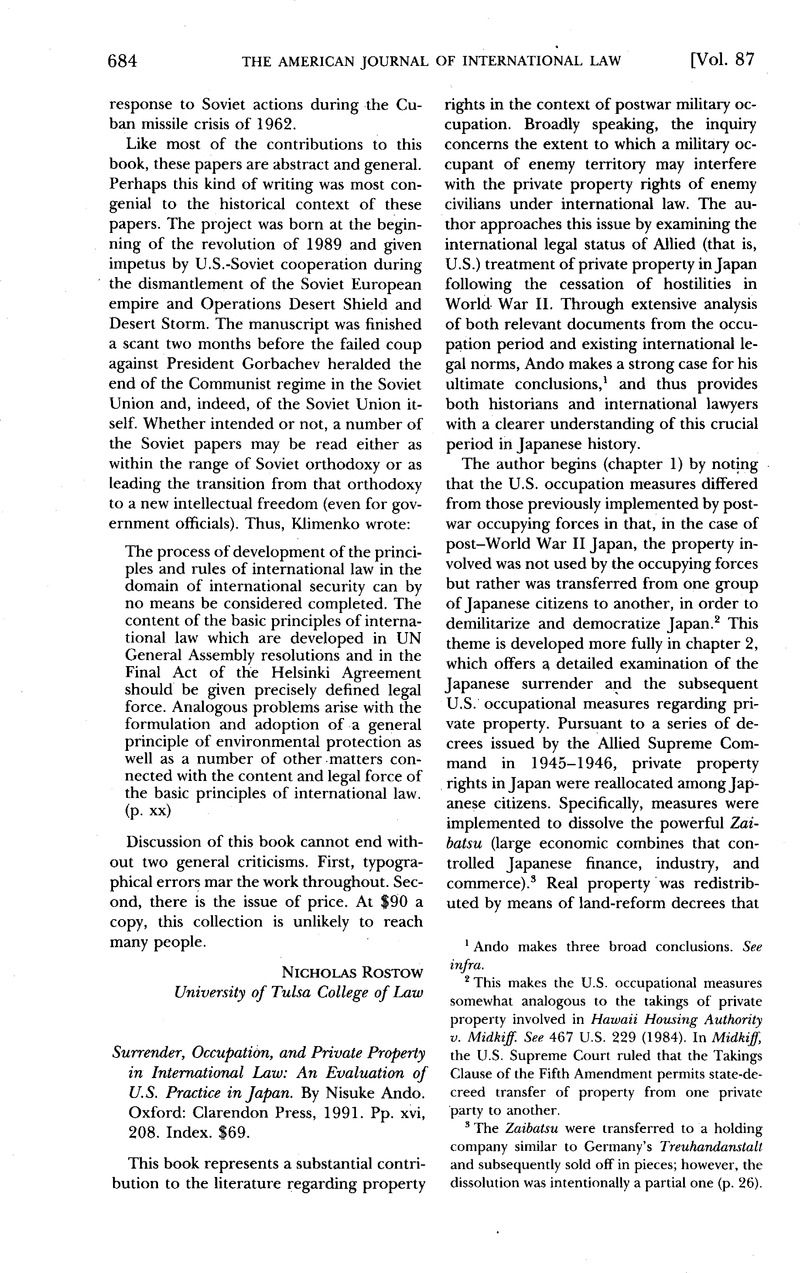No CrossRef data available.
Published online by Cambridge University Press: 27 February 2017

1 Ando makes three broad conclusions. See infra.
2 This makes the U.S. occupational measures somewhat analogous to the takings of private property involved in Hawaii Housing Authority v. Midkiff. See 467 U.S. 229 (1984). In Midkiff, the U.S. Supreme Court ruled that the Takings Clause of the Fifth Amendment permits state-de creed transfer of property from one private party to another.
3 The Zaibatsu were transferred to a holding company similar to Germany’s Treuhandanstalt and subsequently sold off in pieces; however, the dissolution was intentionally a partial one (p. 26).
4 The 15 articles of the Hague Regulations of 1907 constitute an integral part of the Hague Convention with Respect to the Laws and Customs of War on Land, Oct. 18, 1907, 36 Stat. 2277, 1 Bevans 631.
5 The principle of precariousness states that enemy private property rights may be interfered with only to the extent necessary to ensure the orderly administration of the occupation (p. 78).
6 Specifically, the Potsdam Declaration and the Instrument of Surrender, which formed the legal basis of the occupation.